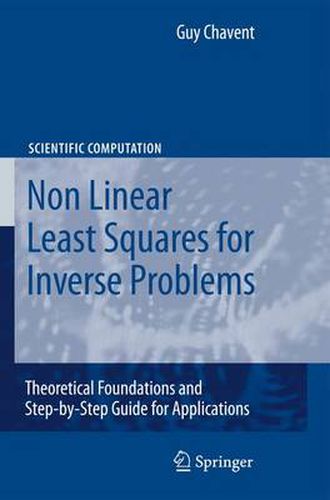Readings Newsletter
Become a Readings Member to make your shopping experience even easier.
Sign in or sign up for free!
You’re not far away from qualifying for FREE standard shipping within Australia
You’ve qualified for FREE standard shipping within Australia
The cart is loading…






This title is printed to order. This book may have been self-published. If so, we cannot guarantee the quality of the content. In the main most books will have gone through the editing process however some may not. We therefore suggest that you be aware of this before ordering this book. If in doubt check either the author or publisher’s details as we are unable to accept any returns unless they are faulty. Please contact us if you have any questions.
The domain of inverse problems has experienced a rapid expansion, driven by the increase in computing power and the progress in numerical modeling. When I started working on this domain years ago, I became somehow fr- tratedtoseethatmyfriendsworkingonmodelingwhereproducingexistence, uniqueness, and stability results for the solution of their equations, but that I was most of the time limited, because of the nonlinearity of the problem, to provethatmyleastsquaresobjectivefunctionwasdi?erentiable….Butwith my experience growing, I became convinced that, after the inverse problem has been properly trimmed, the ?nal least squares problem, the one solved on the computer, should be Quadratically (Q)-wellposed,thatis,both we- posed and optimizable: optimizability ensures that a global minimizer of the least squares function can actually be found using e?cient local optimization algorithms, and wellposedness that this minimizer is stable with respect to perturbation of the data. But the vast majority of inverse problems are nonlinear, and the clas- cal mathematical tools available for their analysis fail to bring answers to these crucial questions: for example, compactness will ensure existence, but provides no uniqueness results, and brings no information on the presence or absenceofparasiticlocalminimaorstationarypoints….
$9.00 standard shipping within Australia
FREE standard shipping within Australia for orders over $100.00
Express & International shipping calculated at checkout
This title is printed to order. This book may have been self-published. If so, we cannot guarantee the quality of the content. In the main most books will have gone through the editing process however some may not. We therefore suggest that you be aware of this before ordering this book. If in doubt check either the author or publisher’s details as we are unable to accept any returns unless they are faulty. Please contact us if you have any questions.
The domain of inverse problems has experienced a rapid expansion, driven by the increase in computing power and the progress in numerical modeling. When I started working on this domain years ago, I became somehow fr- tratedtoseethatmyfriendsworkingonmodelingwhereproducingexistence, uniqueness, and stability results for the solution of their equations, but that I was most of the time limited, because of the nonlinearity of the problem, to provethatmyleastsquaresobjectivefunctionwasdi?erentiable….Butwith my experience growing, I became convinced that, after the inverse problem has been properly trimmed, the ?nal least squares problem, the one solved on the computer, should be Quadratically (Q)-wellposed,thatis,both we- posed and optimizable: optimizability ensures that a global minimizer of the least squares function can actually be found using e?cient local optimization algorithms, and wellposedness that this minimizer is stable with respect to perturbation of the data. But the vast majority of inverse problems are nonlinear, and the clas- cal mathematical tools available for their analysis fail to bring answers to these crucial questions: for example, compactness will ensure existence, but provides no uniqueness results, and brings no information on the presence or absenceofparasiticlocalminimaorstationarypoints….